Thingiverse

DIYAT Switch V4 - IMPROVED/NEW CUSTOMIZER PARAMETERSs) by drewrb
by Thingiverse
Last crawled date: 3 years, 1 month ago
2020 IMPROVED AND NEW CUSTOMIZER PARAMETRIC FEATURES:
Radial flexure width and the concave button recess are now more proportional to outside diameter changes.
Radial flexure thickness is now a parameter to control activation force (Lo, Med and Hi). The default is Lo but Hi force will increase the activation force by approximately 66 grams force for the 35mm switch.
Since the LilyPad Button Board is available is two PCB thicknesses I added an option for Thin or Thick. The default is Thin (.8mm) as supplied by SparkFun Electronics. However the Thick setting will change the base part standoff height to accommodate a 1.6mm PCB thickness (as found on Amazon and elsewhere in the internet).
Since Thingiverse Customizer is still unreliable, I have posted more STL file options to make it easier to download the size and button style you prefer. There are now 12 file options: small, med and large each with a choice of convex or concave button style. Of course you can still download the OpenSCAD source file and open it in the OpenSCAD application to use the built-in customizer for access to all the parameters.
DIYAT Switch V4 Specifications:
Switching capacity: 1 to 50 mA, 5 - 24 VDC (resistive load)
Activation surface: approximately 199 - 1655 square mm (smallest to largest outside diameter parameter)
Activation force: approximately 204 - 248 grams force (largest to smallest outside diameter parameter; measured with digital scale near center of button; less force required with larger button due to mechanical advantage)
Activation distance: approximately 0.25 mm (as per SparkFun Mini Pushbutton Switch - SMD specifications)
Discription
This is a simple passive Do It Yourself Assistive Technology switch enclosure similar to DIYAT V5 (https://www.thingiverse.com/thing:3146646). The major difference is the switch used in the enclosure. This version uses a very small "Lilypad Button Board" with low activation force and capable of signal level switching,
This three part enclosure (no screws) makes a small momentary tactile button switch more durable and accessible by providing protection and a larger activation surface. Designed with OpenSCAD, this parametric design allows selecting the build diameter, base style (plain or strap mounting) and button style (recessed or protruding). STL files for the smallest size with a protruding button are provided for convenience. For larger sizes or other options use the Customizer. Make sure the custom diameter setting matches each of the three parts saved to insure they fit together. This version features a threaded latch and uses radial flexures for frictionless activation. Although it is frictionless, there is resistance from the flexures which increases the activation force slightly. Here's how the flexure works: https://youtu.be/2EqkSfG4u5U
Note: the switch used in this design is good for signal level switching (loads under 50mA) as is the case for any AT switch based on a PCB style tactile switch. For inductive loads, such as motorized toys that have been switch adapted, be aware of the load current. It can easily exceed 50mA. For loads up to 5 amps look at my DIYAT Switch V5. Although considerably larger, the microswitch used in V5 still has low activation force,
The DIYAT Switch is designed to be simple to build, durable, inexpensive (minimal parts) and customizable in size and style. This design is an assembly of three parts that fit together and must be printed with enough precision to operate correctly.
Radial flexure width and the concave button recess are now more proportional to outside diameter changes.
Radial flexure thickness is now a parameter to control activation force (Lo, Med and Hi). The default is Lo but Hi force will increase the activation force by approximately 66 grams force for the 35mm switch.
Since the LilyPad Button Board is available is two PCB thicknesses I added an option for Thin or Thick. The default is Thin (.8mm) as supplied by SparkFun Electronics. However the Thick setting will change the base part standoff height to accommodate a 1.6mm PCB thickness (as found on Amazon and elsewhere in the internet).
Since Thingiverse Customizer is still unreliable, I have posted more STL file options to make it easier to download the size and button style you prefer. There are now 12 file options: small, med and large each with a choice of convex or concave button style. Of course you can still download the OpenSCAD source file and open it in the OpenSCAD application to use the built-in customizer for access to all the parameters.
DIYAT Switch V4 Specifications:
Switching capacity: 1 to 50 mA, 5 - 24 VDC (resistive load)
Activation surface: approximately 199 - 1655 square mm (smallest to largest outside diameter parameter)
Activation force: approximately 204 - 248 grams force (largest to smallest outside diameter parameter; measured with digital scale near center of button; less force required with larger button due to mechanical advantage)
Activation distance: approximately 0.25 mm (as per SparkFun Mini Pushbutton Switch - SMD specifications)
Discription
This is a simple passive Do It Yourself Assistive Technology switch enclosure similar to DIYAT V5 (https://www.thingiverse.com/thing:3146646). The major difference is the switch used in the enclosure. This version uses a very small "Lilypad Button Board" with low activation force and capable of signal level switching,
This three part enclosure (no screws) makes a small momentary tactile button switch more durable and accessible by providing protection and a larger activation surface. Designed with OpenSCAD, this parametric design allows selecting the build diameter, base style (plain or strap mounting) and button style (recessed or protruding). STL files for the smallest size with a protruding button are provided for convenience. For larger sizes or other options use the Customizer. Make sure the custom diameter setting matches each of the three parts saved to insure they fit together. This version features a threaded latch and uses radial flexures for frictionless activation. Although it is frictionless, there is resistance from the flexures which increases the activation force slightly. Here's how the flexure works: https://youtu.be/2EqkSfG4u5U
Note: the switch used in this design is good for signal level switching (loads under 50mA) as is the case for any AT switch based on a PCB style tactile switch. For inductive loads, such as motorized toys that have been switch adapted, be aware of the load current. It can easily exceed 50mA. For loads up to 5 amps look at my DIYAT Switch V5. Although considerably larger, the microswitch used in V5 still has low activation force,
The DIYAT Switch is designed to be simple to build, durable, inexpensive (minimal parts) and customizable in size and style. This design is an assembly of three parts that fit together and must be printed with enough precision to operate correctly.
Similar models
thingiverse
free

DIYAT Switch V1 (bayonet latch - SEE NEW VERSIONS) by drewrb
... enclosure design is an assembly of three parts that fit together and must be printed with enough precision to operate correctly.
thingiverse
free

OpenSCAD Linear Actuator Enclosure for Customizer by pachek
...ckness of the join rib (default =5mm)
motor diameter is a fixed value = 10mm
bearing housings height is a fixed value = 4mm
grabcad
free

Smallest Compression Force Sensor 50N Micro Button Load Cell 5kg
...mallest compression force sensor 50n micro button load cell 5kg
grabcad
smallest button type force load cell 5kg, model fc8e-50n
grabcad
free

Push Button with Integrated Spring for Tactile Switch
...tomised for your application.
i am not sure what this button design is called. if you know what it is, please comment it below.
grabcad
free

Smallest Compression Load Cell 50kg Smallest Button Load Cell 500N
...ll 50kg smallest button load cell 500n
grabcad
smallest button type compression force load cell 500n with 8mm od,model fc8e-500n
grabcad
free

Smallest Compression Force Sensor 100N Micro Button Load Cell 10kg
...on force sensor 100n micro button load cell 10kg
grabcad
smallest button type compression force transducer 100n, model fc8e-100n
grabcad
free

Miniature Button Load Cell 20kg Smallest Compression Force Sensor 200N
... cell 20kg smallest compression force sensor 200n
grabcad
miniature button type compression force load cell 20kg,model fc8e-200n
thingiverse
free

Parametric Buttons by pmoews
... its thickness, the size and thickness of the rim and the placement of the four holes. most missing buttons should be printable.
thingiverse
free

2-Button Footswitch enclosure for Fender style amps by TheoPfender
...giverse
2 button foostswitch enclosure , can be used for example to build a switch for reverb /tremolo on fender style amps etc.
thingiverse
free

Sparkfun Tri-Color Breakout Enclosure by ATS_IO_Lab
...ut that would double as a base for a light diffuser of some kind. designed in rhino, printed on makerbot 2x and afinia printers.
V4
design_connected
$16

V4 vases
...v4 vases
designconnected
sy design v4 vases computer generated 3d model. designed by song, seung-yong.
turbosquid
$20

Door v4
...yalty free 3d model door v4 for download as max, max, and obj on turbosquid: 3d models for games, architecture, videos. (1523140)
turbosquid
$5

Hand v4
...yalty free 3d model hand v4 for download as ztl, obj, and stl on turbosquid: 3d models for games, architecture, videos. (1567431)
turbosquid
$9
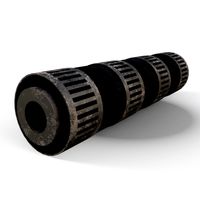
silencer v4
...3d model silencer v4 for download as blend, dae, fbx, and obj on turbosquid: 3d models for games, architecture, videos. (1711410)
turbosquid
$90

V4 Engine
... available on turbo squid, the world's leading provider of digital 3d models for visualization, films, television, and games.
turbosquid
$35
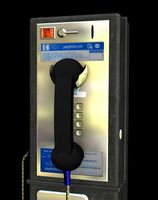
Payphone v4
... available on turbo squid, the world's leading provider of digital 3d models for visualization, films, television, and games.
turbosquid
$28

HAZRO V4
... available on turbo squid, the world's leading provider of digital 3d models for visualization, films, television, and games.
turbosquid
$15

Carousel v4
... available on turbo squid, the world's leading provider of digital 3d models for visualization, films, television, and games.
turbosquid
$1
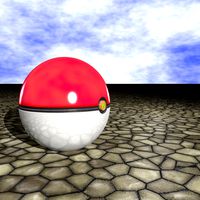
PokBall V4
... available on turbo squid, the world's leading provider of digital 3d models for visualization, films, television, and games.
3ddd
free

фонтан V4
...фонтан v4
3ddd
фонтан
фонтан, fantan, fontan
Improved
cg_studio
$49

Robot Z300 (improved version)3d model
...o
.3ds .fbx .max .obj - robot z300 (improved version) 3d model, royalty free license available, instant download after purchase.
3d_export
$39

Robot Z300 improved version 3D Model
...fantasy sci-fi robots bot humanoid droid sci fi materials character
robot z300 improved version 3d model alekrazum 55067 3dexport
3d_export
$75

CV-90 Improved
...nnon. export versions are fitted with hägglunds e-series turrets, armed with either a 30 mm mk44 or a 35 mm bushmaster autocannon
turbosquid
$55

(Important textures coming back soon after improvements)Cuboid gazebo bench area
... available on turbo squid, the world's leading provider of digital 3d models for visualization, films, television, and games.
3d_export
$15

COMPLETE AUDI 80-100 SHIFT LEVER REPAIR KIT WITH IMPROVED BUSHING
...dexport
• sleeve - 1 pc. • elastic band - 1 pc. • hinge - 1 pc. audi 100c3 audi 100 c4 audi 80 b3 (checked) audi 80 b4 (checked)
3d_export
$7

REPAIR KIT FOR GEARSHIFT LEVER AUDI 80-100 IMPROVED
...ar of the gum is excluded. - rusk - 1 pc. - elastic band - 1 pc. audi 100c3 audi 100 c4 audi 80 b3 (checked) audi 80 b4 (checked)
3d_export
$30
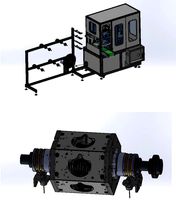
cup mask machine front section stereo mask manufacturing machine improved version
...ing rack cad outsourcing list. the drawings are mature drawings that have been produced.<br>drawing version solidworks 2018
3d_export
free
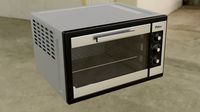
oven - forno
...oven - forno
3dexport
gradually i'm trying to improve my 3d.
3d_export
$75

T-55
...nally, but these improvements made the tank more efficient and lethal. the t-55 was officially adopted by the soviet army in 1958
3d_export
$5

civil registration authorities
...civil registration authorities
3dexport
city wedding square. the model can be used for projects, to improve the project, etc.
Switch
archibase_planet
free

Switch
...switch
archibase planet
switch cluster switch
light switch 1 - 3d model for interior 3d visualization.
archibase_planet
free

Switch
...switch
archibase planet
switches switch
switch 1 - 3d model (*.gsm+*.3ds) for interior 3d visualization.
archibase_planet
free

Switch
...switch
archibase planet
closer button switch cluster switch
switch - 3d model (*.3ds) for interior 3d visualization.
archibase_planet
free

Switch
...switch
archibase planet
switch closer
light switch 2 - 3d model for interior 3d visualization.
archibase_planet
free

Switch
...switch
archibase planet
closer button switch
switch n300808 - 3d model (*.gsm+*.3ds) for interior 3d visualization
archibase_planet
free

Switch
...switch
archibase planet
closer button switch
switch n141108 - 3d model (*.gsm+*.3ds) for interior 3d visualization.
archibase_planet
free

Switch
...switch
archibase planet
cluster switch closer
switch n260609 - 3d model (*.gsm+*.3ds) for interior 3d visualization.
archibase_planet
free

Switch
...switch
archibase planet
button switch closer
switch 2 - 3d model (*.gsm+*.3ds) for interior 3d visualization.
archibase_planet
free

Switch
...switch
archibase planet
button switch closer
switch n070510 - 3d model (*.gsm+*.3ds) for interior 3d visualization.
3d_export
$5

switch
...switch
3dexport
3d model of a low-poly switch
Customizer
3ddd
free

Customized
...customized
3ddd
комод
customized, chest, cabinet
3d_export
$50
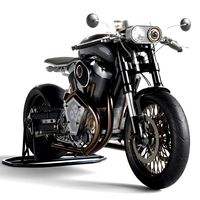
Custom motorcycle
...custom motorcycle
3dexport
custom motorcycle
3d_export
$21

Funko custom
...funko custom
3dexport
funko custom
turbosquid
$2

Customs
... available on turbo squid, the world's leading provider of digital 3d models for visualization, films, television, and games.
turbosquid
$2
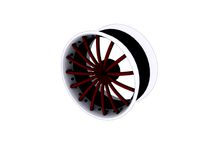
Customs
... available on turbo squid, the world's leading provider of digital 3d models for visualization, films, television, and games.
turbosquid
$10

Custom Car
...turbosquid
royalty free 3d model custom car for download as on turbosquid: 3d models for games, architecture, videos. (1584212)
3d_export
$7
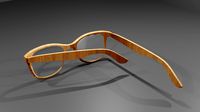
Custom glasses
...custom glasses
3dexport
3d custom glasses;<br>textured with non overlapping<br>rigged: yes
turbosquid
$80

Custom sportbike
...d
royalty free 3d model custom sportbike for download as fbx on turbosquid: 3d models for games, architecture, videos. (1313435)
turbosquid
$30

custom truck
...squid
royalty free 3d model custom truck for download as max on turbosquid: 3d models for games, architecture, videos. (1329357)
turbosquid
$10

custom alien
...squid
royalty free 3d model custom alien for download as fbx on turbosquid: 3d models for games, architecture, videos. (1244065)
New
turbosquid
$119

New New Beetle
... available on turbo squid, the world's leading provider of digital 3d models for visualization, films, television, and games.
3d_export
$5

New-feather
...new-feather
3dexport
new-feather
3d_export
$6

new style
...new style
3dexport
new style room
3ddd
free

New Items
...ew items
3ddd
new items , барный
барный стул от китайского производителя фирмы new items
3d_export
$6

Logo new
...logo new
3dexport
new american style logo
3d_export
$10

New jersey
...new jersey
3dexport
new jersey stp and stl format
design_connected
$20

New Deal
...new deal
designconnected
new deal computer generated 3d model.
3d_ocean
$15
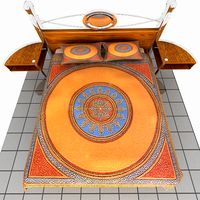
New bed
... for this bed all this file format include in zip file 3ds,obj,max,zip file change material and re-size very easy very for render
3ddd
free

Sofa-New Classic
...sofa-new classic
3ddd
new classic
sofa,new classic
design_connected
$13

New Antiques
...new antiques
designconnected
cappellini new antiques computer generated 3d model. designed by wanders, marcel.
